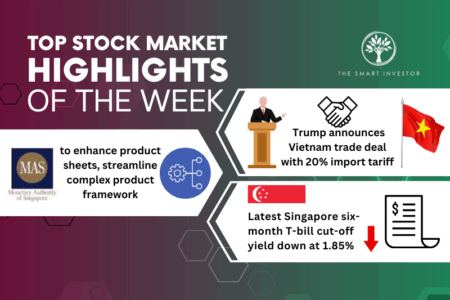2020 showed investors the downside of investing when markets around the world crashed in synchronicity back in March.
The reason should be familiar by now: the spread of COVID-19 that upended economies and caused untold suffering to millions.
Stock markets’ reactions were swift and took many by surprise as the market plunged by 30% or more in a short period.
Thankfully, governments around the world reacted quickly by lowering interest rates.
Many countries have also introduced stimulus packages for beleaguered sectors and mandated tenant relief measures for businesses facing acute challenges.
These quick-thinking measures helped to avert a global recession akin to the one experienced in 2009.
Despite all the measures, certain sectors are still struggling.
As we look ahead into 2021, we should expect more volatility as economies around the world recover.
Volatility isn’t new for investors.
After all, market crashes are an inevitable part of investing.
The question is, how do you protect your portfolio from losses?
I would like to suggest three ways.
Position sizing
Diversification has been touted as the way to limit your risks by spreading out your bets over a larger number of stocks.
While this is true, you also have to be aware of the size of each position relative to the risk level of the business.
Portfolio management entails sizing each position to not only maximise your gains when things go right but to also minimise your losses should things turn south.
A simple rule is to check for the average sizing for each position within your portfolio.
For example, if you own 20 stocks, then the average size for each position should be 5% (i.e. 100% divided by 20).
Ideally, we should size each position at 5% to ensure adequate diversification across the portfolio.
In reality, this isn’t always the case.
We may have some positions dominating the portfolio with a 10% weight, while other positions may occupy just 1%.
The key is to understand the level of risk pertaining to each business and size your position accordingly.
As a general rule, higher-risk businesses such as cyclical ones or those with high valuations should be sized smaller.
If a crash does occur, it’s usually the more expensive stocks that get hit sharply.
By sizing your positions smaller in such stocks, you can avoid suffering sharp losses should a crash occur.
Industry diversification
Another useful rule to remember when constructing your investment portfolio is to ensure you own a good mix of industries.
For instance, if you purchase a smattering of banks such as United Overseas Bank Ltd (SGX: U11), HSBC Holdings plc (LON: HSBA) and the Bank of China (SEHK: 3988), you still end up being exposed to just the banking sector.
Should any macro-economic event negatively impact banks, your portfolio may still drop like a stone as you are heavily exposed to that sector.
It’s therefore important that you diversify across different sectors so that if any particular sector is badly hit by a crisis, the overall portfolio will not be severely affected.
A good example to illustrate this point would be how the pandemic has decimated the aviation, hospitality and tourism industries.
Assuming you had the bulk of your money parked in just these three industries, your portfolio would have suffered significant losses and recovery would not be imminent.
That said, sector diversification should also include a good mix of cyclical and non-cyclical industries.
Industries such as education and healthcare, for example, are more resilient during downturns compared to cyclical ones such as commodities or banking.
Geographical diversification
The third aspect you should pay attention to is geographic diversification.
Investors tend to have a home bias in that they generally prefer investing in local businesses due to familiarity.
Some local businesses, such as Sheng Siong Group Ltd (SGX: OV8) and Old Chang Kee Ltd (SGX: 5ML), serve predominantly local customers and may not have much overseas exposure.
When a crisis hits and demand falls in a particular country or region, such businesses may be hard hit if they cannot find alternative sources of business.
Investors should look for a range of businesses that derive their revenue from other geographic regions.
This minimises the impact of any one region being badly hit by a crisis.
Some companies such as Nike (NYSE: NKE) and Amazon (NASDAQ: AMZN) are effectively global, and can help to provide stability to the portfolio as their sources of income are sufficiently diversified.
Start the year off right, and make 2021 a more profitable year for your investments. Download your FREE report: 3 Stocks I will buy in 2021! It comes with a bonus 3 trends for 2021, so you will be well equipped to ride the stock market recovery in 2021. Click HERE to download now!
Don’t forget to follow us on Facebook and Telegram for some of our latest free content!
Disclaimer: Royston Yang owns shares in Nike.




